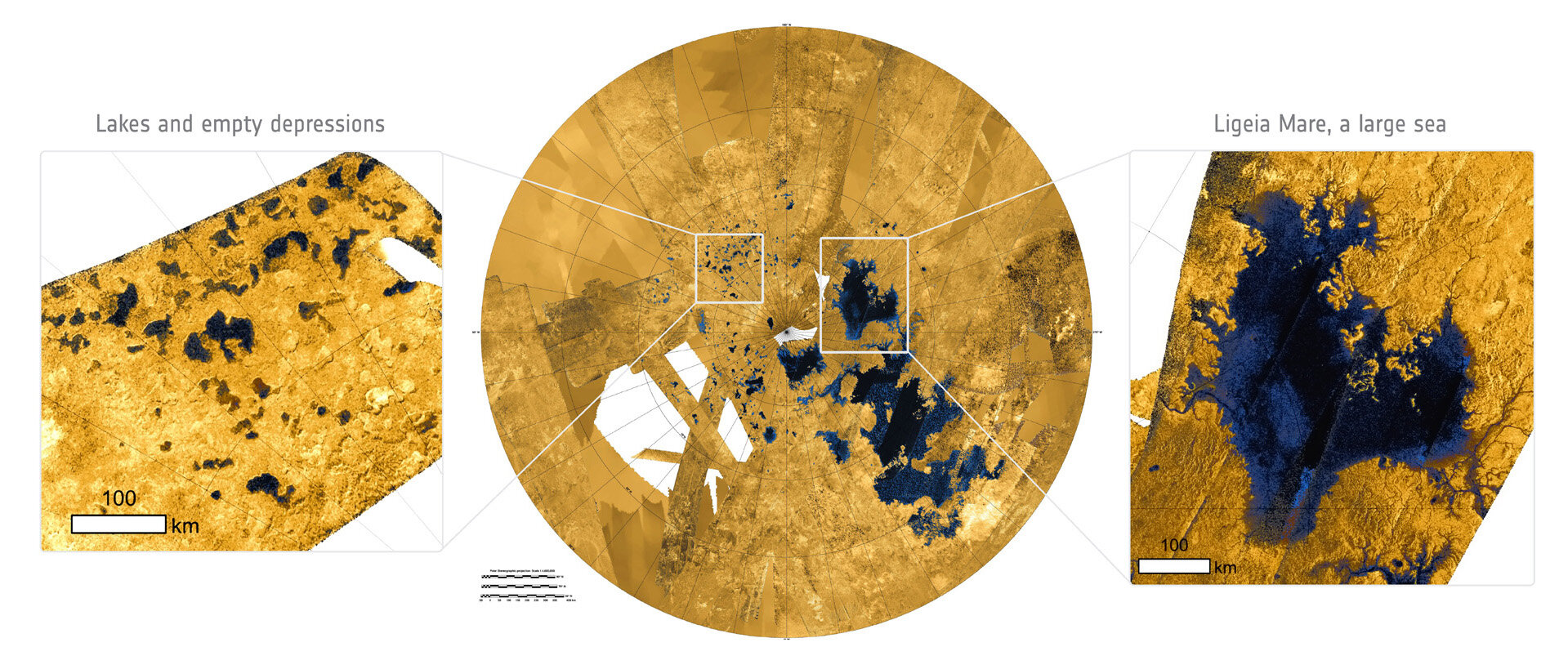Titan’s “magic islands” are likely floating chunks of porous, frozen organic solids, a new study finds, pivoting from previous work suggesting they were gas bubbles. The study was published in Geophysical Research Letters.
Scientists first spotted these ephemeral “magic islands” in 2014 with the Cassini-Huygens mission and have since been trying to figure out what they are. Previous studies suggested they could be phantom islands caused by waves or real islands made of suspended solids, floating solids, or bubbles of nitrogen gas.
Xinting Yu, a planetary scientist and lead author of the new study, wondered if a closer look at the relationship between Titan’s atmosphere, liquid lakes, and the solid materials deposited on the moon’s surface could reveal the cause of these mysterious islands.
“I wanted to investigate whether the magic islands could actually be organics floating on the surface, like pumice that can float on water here on Earth before finally sinking,” Yu said.
Titan’s upper atmosphere is dense with diverse organic molecules. The molecules can clump together, freeze, and fall onto the moon’s surface—including onto its eerily smooth rivers and lakes of liquid methane and ethane, with waves only a few millimeters tall.
2024-01-06 08:00:04
Link from phys.org
